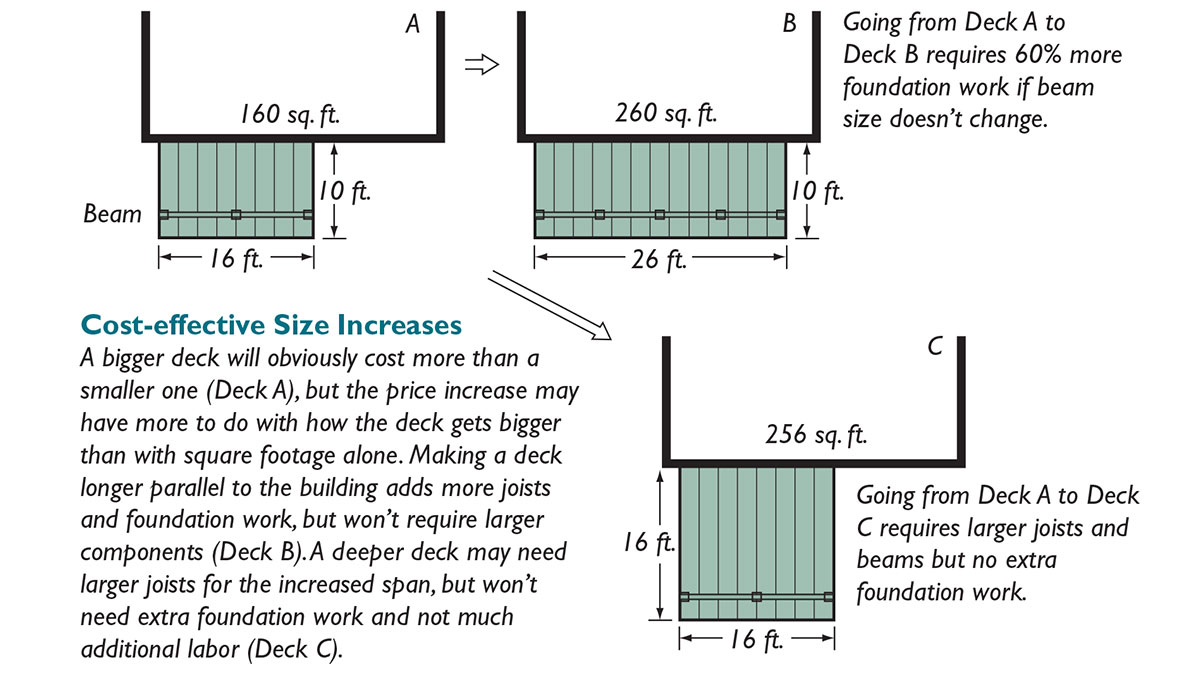How Big Should Your Deck Be?
Consider scale, cost, and lifestyle when deciding the the size of a deck or porch.
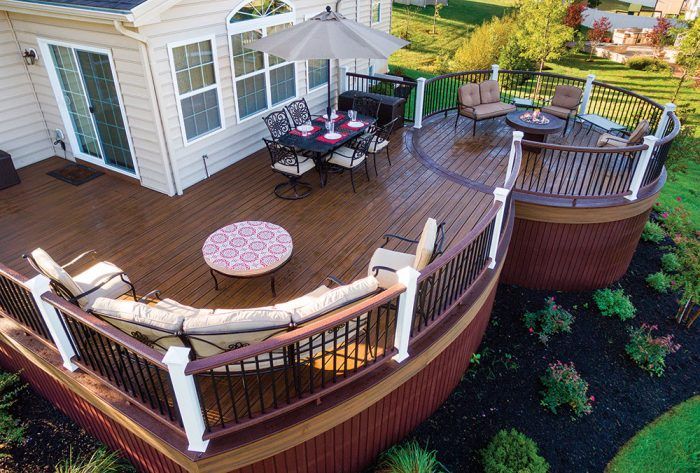
A deck should be sized so that it is both in scale with the house it is attached to and adequate for the functions it needs to perform. As with most building projects, enlarging the deck makes it easier to accommodate all the features you want, but it makes the deck more expensive too. Although deck costs vary with materials chosen, complexity of design, and local labor conditions, there are ways to increase deck size without breaking the bank. Regardless of your budget, shop carefully and keep exotic extras under control, but spend lavishly on creativity.
Size
In addition to affecting cost, the size of a deck has a lot to do with its overall feel. Besides being more expensive than a smaller deck, a large deck that tries to answer too many needs can feel like a parking lot rather than a cozy and inviting space. Remember too that size is relative. A small house is better served by several small decks, either separated or on different levels, whereas a large house might need to be balanced by a big, unbroken expanse.
If you need the square footage of a large deck to accommodate several different functions, consider opting for two (or more) smaller decks. While level changes can play a part in delineating different decks, decks can just as easily be located on the same level but accessed by separate interior doors. What I like about smaller decks is that they keep things on a human scale.
I use some general sizing guidelines to help me when I design a deck. One rule of thumb suggests about 20 sq. ft. of deck per person for social situations. On top of that, you’ll need to add extra square footage for furniture, grills, and planters. I like a minimum dimension of 12 ft. in both directions for all social areas.
In detail
I use the following minimum dimensions (as measured away from the house) as general rules of thumb when planning decks:
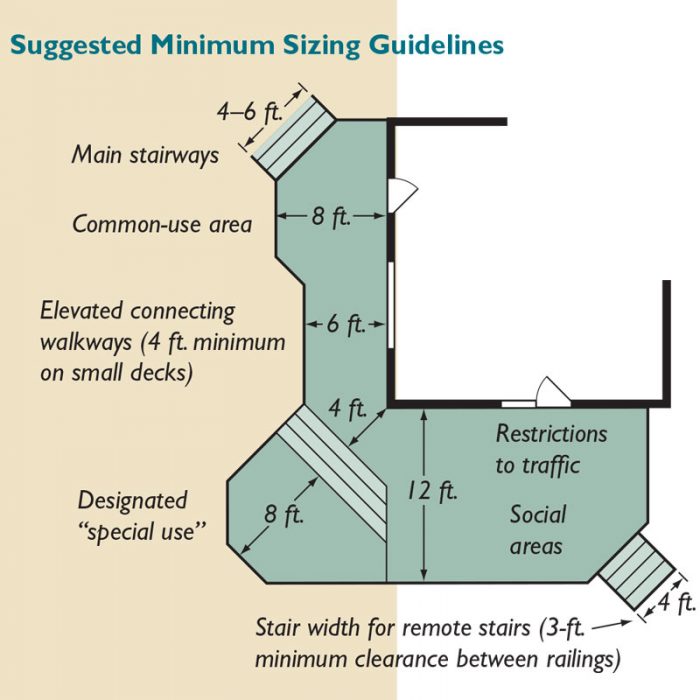 |
Decks that extend more than 14 ft. to 16 ft. from the house will probably require additional foundation and structural work (and more expense), so consult span tables and your pocketbook before deciding to go this route. I think that anything over 16-ft. wide feels too large for a residential deck and should be broken into smaller decks. Smaller doesn’t have to mean inadequate. It’s quite easy to incorporate a food area, seating, and a hot tub on a 12-ft.-by 12-ft. deck if you don’t need large spaces for many people.
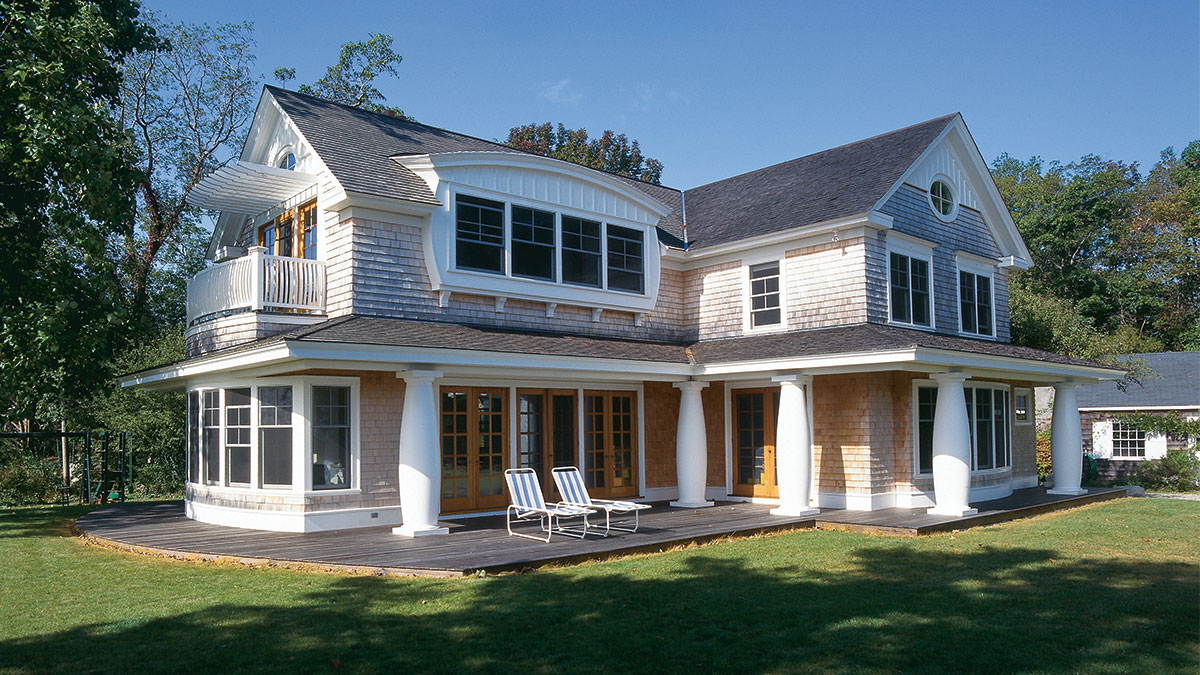
Cost
Like cars, decks come in a wide range of prices. Material prices can vary by 10% to 20% or more from year to year, and if you need to hire help, the cost of labor can fluctuate as well. Availability can also affect the cost of your deck, as local suppliers tend to stock “best sellers,” which aren’t necessarily the most appropriate materials for your deck or of the best quality. If good materials aren’t available locally, they usually can be found elsewhere, but shipping them across the country may increase their cost significantly.
Trade secretDoubling the size of a deck doesn’t necessarily mean that it will cost twice as much. When it comes to framing and decking materials, cost is almost directly proportional to size, but it’s harder to generalize about labor. It doesn’t take much longer to cut, fit, and hang a 12-ft. joist than a 10-ft. joist; on the other hand, a 16-ft. joist is heavy and may require handling by two people (and therefore double the labor). Doubling the deck size may increase the amount of railing needed only by 50%, and there may not be a need to add another stairway, access door, or deck accessories. And increasing the dimension away from the house may require only wider joists but no extra foundation work. |
Built-in seating, elaborate railings, curves, trellises, exotic materials, and multiple coats of finish all add significantly to the price of even the most modestly sized deck. The desire for clear lumber, extensive landscaping, and problems with the site (such as steepness or drainage) are other factors that can drive up the price. And if you require the services of an electrician and a plumber to add lighting or a hot tub, this will also increase your cost.
Even the method you choose to fasten the decking can have a significant impact on your budget. For example, high-quality stainless-steel fasteners cost several times more than standard lumberyard-variety galvanized or coated fasteners, but because the more expensive fasteners won’t chip and corrode or stain your decking, I think that this is one area where it doesn’t pay to economize. Switching from nails to screws may almost double the amount of labor required to fasten down the decking; using an elaborate hidden fastening system may double the labor again, besides adding to the hardware cost.
Fine Homebuilding Recommended Products
Fine Homebuilding receives a commission for items purchased through links on this site, including Amazon Associates and other affiliate advertising programs.
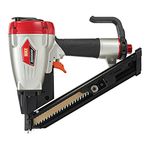
Metal Connector Nailer
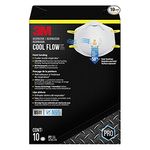
N95 Respirator

A Field Guide to American Houses

